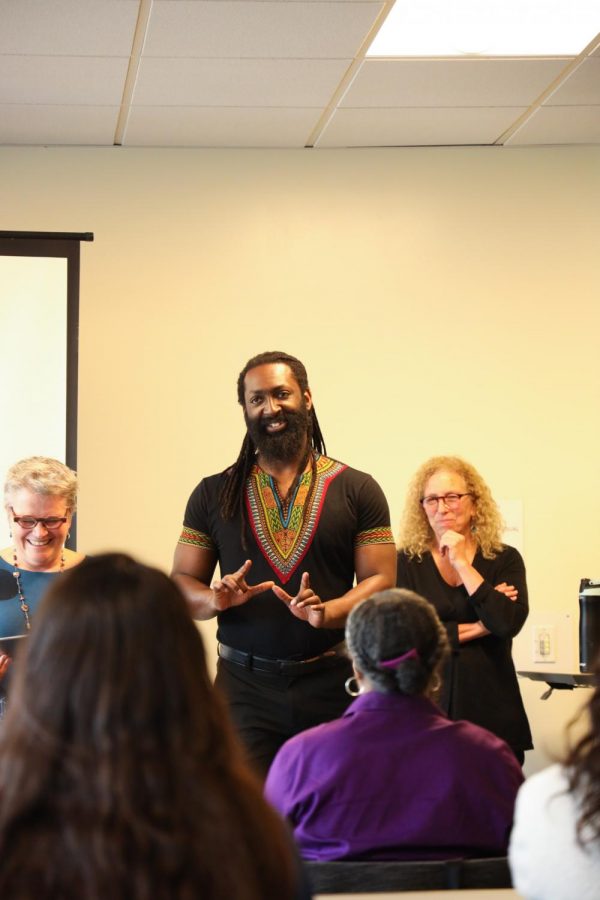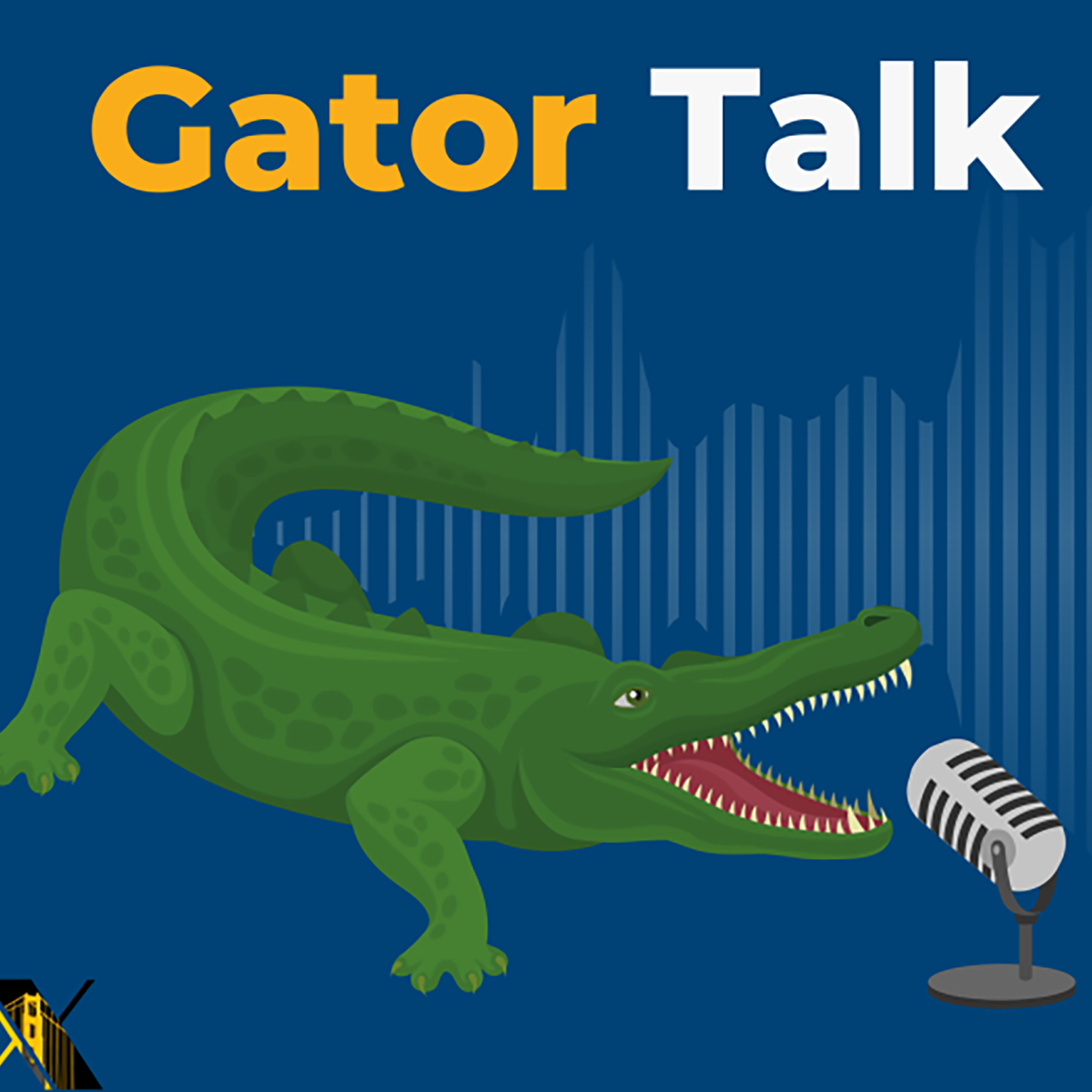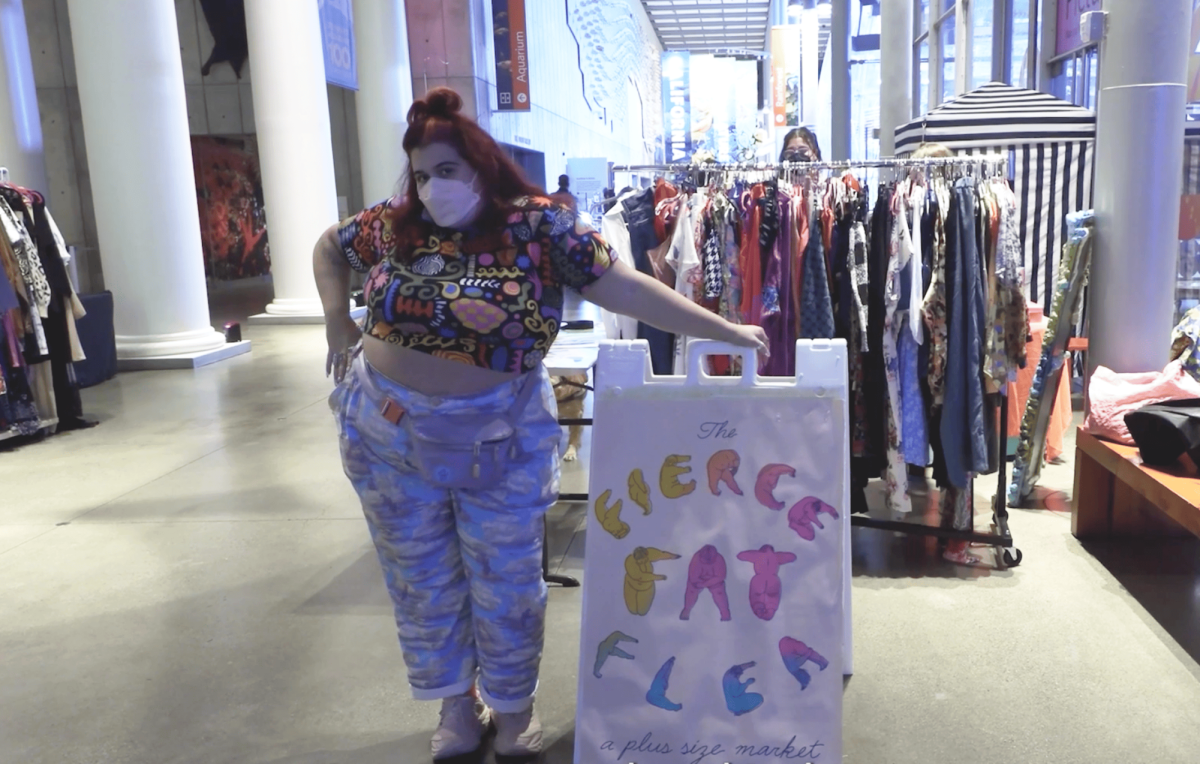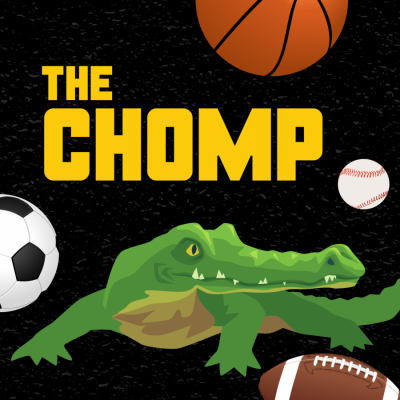Dancing while deaf addresses disability issues
Antoine Hunter during the Longmore Lecture in Disability Studies, Dancing While Deaf presentation on February 27, 2020. (Dyanna Calvario / Golden Gate Xpress)
Mar 4, 2020
He moved his hands mostly, speaking and dancing without words or music. Deaf dancer and American Sign Language teacher Antoine Hunter shared his experiences and passions with an audience of SF State students and faculty.
Longmore Lecture in Disability Studies hosted the Dancing While Deaf lecture, which included Hunter, in the J. Paul Leonard Library. Hunter shared his journey of being deaf and finding and loving himself through his disabilities.
The event was also streamed through Zoom live chat where the audience was able to join in on the lecture.
The lecture started off with Hunter, who was born and raised in Oakland, introducing himself to the crowd of students. Hunter also had two interpreters for him to sign people’s questions to him, and to also say what Hunter was signing to the audience.
Hunter described himself by saying he is 6-foot-2-inch and wearing a black dashiki and black pants. He also describes himself as an African Indigenous, deaf, two-spirited person who is brilliant and beautiful.
In the presentation, Hunter goes over his contributions towards the deaf community, such as being the founder of his Urban Jazz Dance Company and becoming the director. Which is a dance company he created for anyone and everyone to join. He is the former president of the Bay Area Deaf Advocator, and also creator of the Bay Area Deaf Dance Festival. The rest of his bio also includes poet, mentor, model, actor speaker.
He went back into his memories and described that he discovered dance was his passion at an early age during grade school. Hunter said that in elementary school, he performed a dance number by himself because no one wanted to be in his group, which led him to continue dancing.
The presentation also included classroom issues towards students with disabilities, and what the root of them can be. Some of the issues Hunter stated were, “groups with disabilities get left out, teachers do not understand or accommodate,” and, “research before you assume/ wealth of information at our fingertips.”
Part of Hunter’s presentation, was teaching everyone sign language, such as signing the word yes, where you make your hand into a letter A in sign language and move it up and down, and signing the word no, where you put your in index and middle finger together and hit it against your thumb in up and down motions.
Henry Ho, who decided to attend the presentation last minute explained that he has always been interested in sign language. “I came to this event to learn some signs and to also see how someone can sign and dance at the same time, with or without music,” said Ho.
Other signs that were taught were fear, where you take both hands and open your palms and spread your fingers, place them at your chest and shake them, and understand, where you take your index finger place it next to the top of your head, and move your finger up and down.
Sign language, which takes a huge part of Hunter’s life, has also become incorporated into his dances. Hunter proceeded to perform a dance number, with no music, just his body and hands. Incorporating many body roll movements and jumps in the air, he also signs while dancing.
SF State transfer student Vu Tran, came to the event so she could see how someone is able to dance while being deaf, she said, “I was super curious on how someone who is deaf can also dance because they can’t hear music, or how can someone who is deaf teach others how to dance.”
Antoine Hunter’s presentation ended with questions from the audience, and his goodbyes to the disability program and students in attendance.









